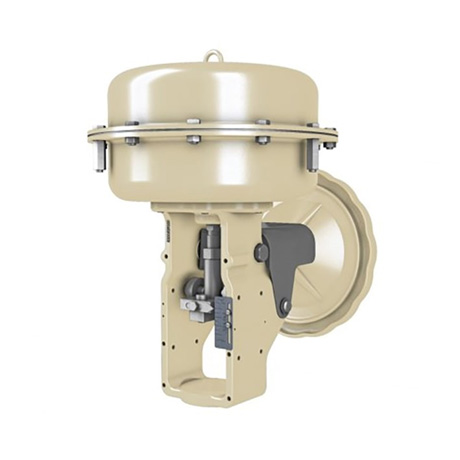What Are You Looking For?
Pneumatic actuators play a crucial role in the automation of various industrial processes, providing a reliable and efficient means of controlling valves. Among the different types of pneumatic actuators, the multi-spring diaphragm pneumatic actuator stands out for its versatility and precision. In this article, we will delve into the features, applications, and advancements in multi-spring diaphragm pneumatic actuators .

Versatility: Multi-spring diaphragm pneumatic actuators are renowned for their versatility in accommodating a wide range of valve sizes and types. This adaptability makes them suitable for diverse industrial applications.
Precise Control: These actuators offer precise control over valve positioning, making them ideal for processes that require accurate and repeatable control. The multiple springs allow for fine-tuning of the actuator's response, ensuring optimal performance in various operating conditions.
Fail-Safe Design: The fail-safe design of multi-spring diaphragm pneumatic actuators ensures that in the event of air supply failure, the actuator returns to a predefined safe position. This feature enhances operational safety and minimizes the risk of system failure.
Multi-spring diaphragm pneumatic actuators find applications across various industries, including:
Chemical Processing: Controlling the flow of chemicals and gases in chemical processing plants.
Oil and Gas: Regulating valves in pipelines and refineries for efficient and safe operation.
Water Treatment: Managing valves in water treatment plants for precise control of water flow.
Power Generation: Controlling valves in power plants to optimize energy production.
Smart Technology Integration: Recent advancements involve integrating smart technologies such as sensors and communication interfaces. This allows for real-time monitoring, remote control, and predictive maintenance, enhancing overall system efficiency.
Material Innovations: Ongoing research focuses on developing advanced materials for diaphragms, springs, and other components, improving durability and corrosion resistance. This ensures a longer lifespan and reduced maintenance requirements.
Energy Efficiency: Manufacturers are continually working on optimizing the design to reduce air consumption and improve energy efficiency. This not only contributes to cost savings but also aligns with the growing emphasis on sustainable practices.
Multi-spring diaphragm pneumatic actuators have proven themselves as reliable and versatile components in industrial automation. With their precise control, fail-safe design, and ongoing technological advancements, these actuators continue to play a pivotal role in enhancing the efficiency and safety of various industrial processes. As technology evolves, we can expect further innovations that will propel multi-spring diaphragm pneumatic actuators to new heights in automation.
